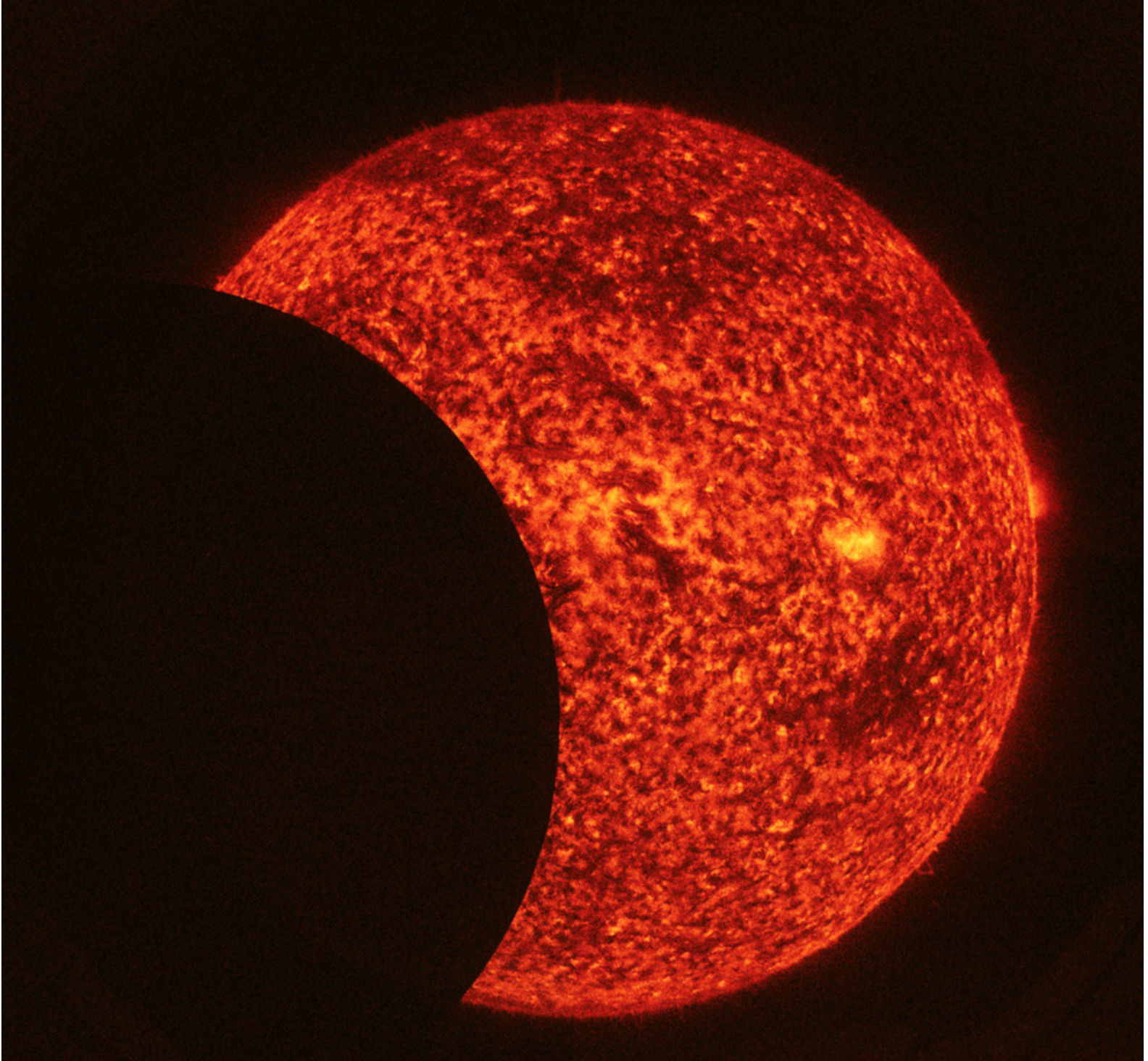'Shaky' Solar Eclipse Spotted from Space (Video)

A "shaky" solar eclipse in space was captured by one of NASA's sun-gazing spacecraft. The agency's Solar Dynamics Observatory (SDO) caught the eclipse on camera on Sunday (Oct. 30).
SDO's footage of the partial solar eclipse shows the sun appearing to have tremors, but the shivering wasn't due to worries about Halloween.
"Instead, the shaking results from slight adjustments in SDO's guidance system, which normally relies upon viewing the entire sun to center the images between exposures," NASA officials wrote in a statement.
The moon passed across the sun’s face for about an hour, between 3:56 p.m. and 4:56 p.m. EDT (1956 to 2056 GMT), during Sunday's eclipse, which was visible from SDO's vantage point in Earth orbit but not from the ground. At peak coverage, the moon obscured about 59 percent of the sun.
"The moon's shadow obstructs SDO's otherwise constant view of the sun, and the shadow's edge is sharp and distinct, since the moon has no atmosphere which would distort sunlight," NASA officials said in the same statement.
SDO's images were taken in extreme ultraviolet light, which is invisible to human eyes. In these images, the sun is colored red.
Breaking space news, the latest updates on rocket launches, skywatching events and more!
While SDO happened to be in the right spot for Sunday's eclipse, the primary goal of the spacecraft's $800 million mission involves helping scientists learn more about the sun's variable activity. SDO's data could lead to better "space weather" predictions for Earth, NASA officials have said.
When the sun is extremely active, huge eruptions of solar plasma known as coronal mass ejections can slam into Earth's atmosphere, spawning geomagnetic storms that can disrupt power grids, satellite navigation and other infrastructure humans depend on. These storms can also ramp up the northern and southern lights.
SDO launched in February 2010.
Follow Elizabeth Howell @howellspace, or Space.com @Spacedotcom. We're also on Facebook and Google+. Original article on Space.com.

Elizabeth Howell (she/her), Ph.D., was a staff writer in the spaceflight channel between 2022 and 2024 specializing in Canadian space news. She was contributing writer for Space.com for 10 years from 2012 to 2024. Elizabeth's reporting includes multiple exclusives with the White House, leading world coverage about a lost-and-found space tomato on the International Space Station, witnessing five human spaceflight launches on two continents, flying parabolic, working inside a spacesuit, and participating in a simulated Mars mission. Her latest book, "Why Am I Taller?" (ECW Press, 2022) is co-written with astronaut Dave Williams.

